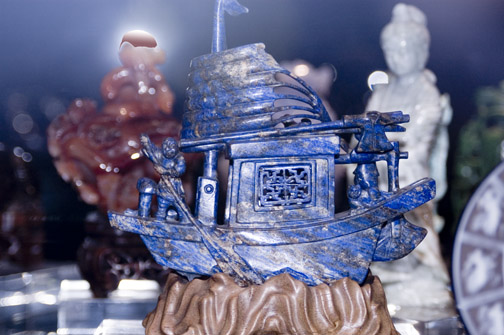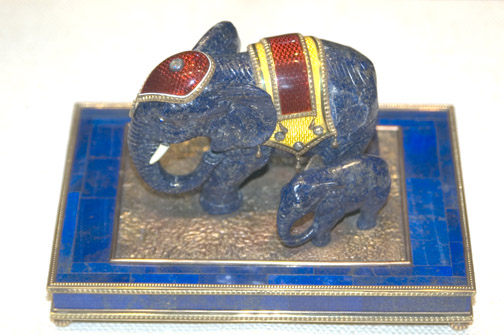
Crystal system: not a mineral,
but a rock
Chemical formula/composition: a
rock composed of Lazurite (a sodalite mineral), calcite, and pyrite
Crystal habit: Occurs
as compact masses infilling veins, etc.
Hardness: 5-6
Specific gravity: 2.38-2.95
Luster: vitreous (glassy), waxy
to dull
Toughness: fair to good
Optics: semitranslucent to opaque
Color: Dark,
azure blue to purple
Varieties: varies
from near pure blue to white with blue streaks
Localities: Afghanistan,
Russia, Chile, Canada, San Bernardino County, California, Colorado.
Synthetics: Synthetics are not
known on the world market
Lapis lazuli is a very attractive dark-blue, opaque stone. It is composed of many crystals of the minerals hauynite, lazurite, noselite, and sodalite that have grown together with white calcite and pyrite. Hence, it is really a rock. This should be obvious when you are looking at a sample that contains white minerals, golden minerals, and blue minerals. However, the higher the quality, the less the pyrite and calcite. Purer blue is better.
The name lapis lazuli was not the first name used for this stone and its use began in the Middle Ages. To the ancients, lapis lazuli was called sapphire, a name now used for varieties of corundum. Lapis lazuli has a long history of use, dating back some 6,000 yrs. The first and most important deposits exploited on a large scale were from Afghanistan.
Lapis lazuli is fashioned into beads, used in pendants, and carved into attractive designs including large pieces such as vases. During the Renaissance the Old Masters ground it to make the pigment aquamarine, which is used in oil paint. Modern chemicals have replaced this use today.
Lapis lazuli is only a semiprecious stone, but it is popular all over the world because of humans' predilection for the color blue. Though fake lapis lazuli is sold, quality lapis lazuli is not very expensive and is easily available.

